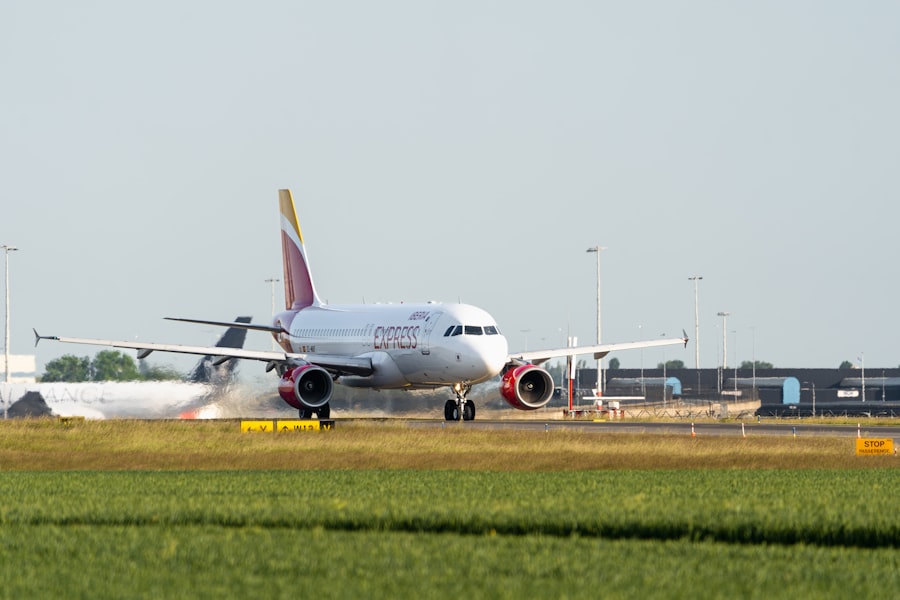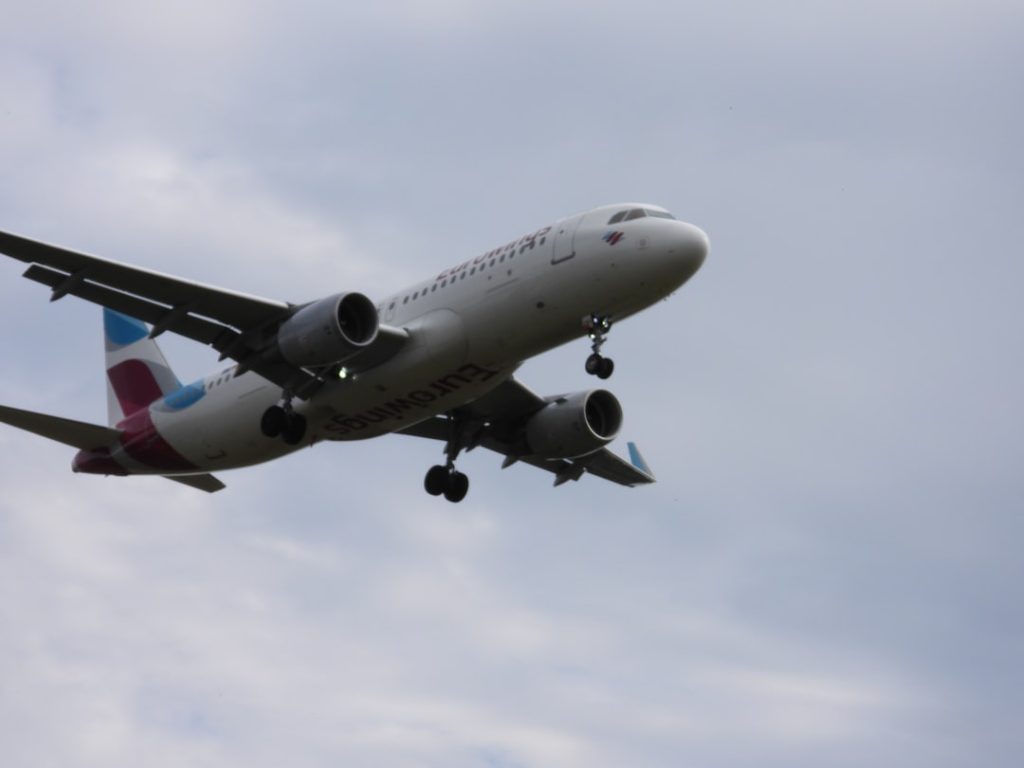The Airbus A320 family represents a significant milestone in commercial aviation, known for its innovative design and operational efficiency. First introduced in 1988, the A320 was the first commercial aircraft to feature a fully digital fly-by-wire control system, which replaced traditional mechanical controls with electronic interfaces. This advancement not only enhanced the aircraft’s handling characteristics but also allowed for greater flexibility in design and performance optimization.
The A320 family includes several variants, such as the A318, A319, A320, and A321, catering to different market needs and passenger capacities. With a typical seating capacity ranging from 140 to over 240 passengers, the A320 has become a staple for airlines around the globe, serving short-haul and medium-haul routes with remarkable efficiency. The aircraft’s design incorporates advanced aerodynamics and materials, contributing to its fuel efficiency and operational range.
The A320 is powered by either CFM International’s LEAP or Pratt & Whitney’s PW1000G engines, both of which are designed to minimize fuel consumption while maximizing thrust. The aircraft’s wing design, featuring wingtip devices known as sharklets, further enhances aerodynamic performance by reducing drag during flight. This combination of cutting-edge technology and thoughtful engineering has made the A320 a preferred choice for airlines looking to optimize their fleets while providing passengers with a comfortable flying experience.
As we delve deeper into the operational aspects of the A320, it becomes evident that understanding its systems and procedures is crucial for maximizing efficiency and safety.
Key Takeaways
- The A320 is a popular commercial aircraft known for its advanced avionics and fuel efficiency.
- Pre-flight checklists and procedures are crucial for ensuring the safety and efficiency of the A320.
- The A320’s advanced avionics, such as the fly-by-wire system, help pilots navigate and manage the aircraft more effectively.
- Efficient takeoff and climb techniques, such as using the flex temperature and reduced thrust, can save fuel and reduce emissions.
- Proper cruise and altitude management, along with approach and landing procedures, are essential for maximizing fuel economy and safety.
Pre-flight Checklist and Procedures
Before embarking on any flight, pilots must adhere to a comprehensive pre-flight checklist that ensures all systems are functioning correctly and that the aircraft is ready for departure. The pre-flight checklist for the A320 is meticulously designed to cover all critical aspects of the aircraft’s operation. It begins with an external inspection, where pilots assess the aircraft’s condition, checking for any visible damage or irregularities.
This includes examining the wings, fuselage, landing gear, and control surfaces. Additionally, pilots verify that fuel levels are adequate and that all necessary equipment is onboard. Once the external inspection is complete, pilots move on to the cockpit checks.
This involves powering up the aircraft’s systems and conducting a series of tests to confirm that avionics, flight controls, and emergency equipment are operational. The A320’s advanced avionics suite includes features such as the Electronic Flight Instrument System (EFIS) and Flight Management System (FMS), which require thorough verification before takeoff. Pilots also review weather conditions, flight plans, and weight and balance calculations to ensure compliance with safety regulations.
By meticulously following this pre-flight checklist, pilots can identify potential issues early on, thereby enhancing safety and operational efficiency.
Utilizing the A320’s Advanced Avionics

The A320’s advanced avionics play a pivotal role in modern aviation, providing pilots with critical information and enhancing situational awareness during all phases of flight. The cockpit is equipped with multiple displays that present data on navigation, aircraft performance, and system status in real-time. One of the standout features of the A320’s avionics is its Fly-By-Wire system, which translates pilot inputs into electronic signals that control the aircraft’s flight surfaces.
This system not only improves responsiveness but also incorporates safety features such as envelope protection, which prevents pilots from exceeding critical flight parameters. In addition to Fly-By-Wire technology, the A320’s FMS allows for efficient route planning and management. Pilots can input waypoints, altitudes, and speeds into the system, which then calculates optimal flight paths based on current weather conditions and air traffic.
The FMS also interfaces with the aircraft’s autopilot system, enabling automated navigation during cruise phases. This integration reduces pilot workload and enhances precision in maintaining flight profiles. Furthermore, the A320 is equipped with advanced weather radar systems that provide real-time updates on meteorological conditions ahead, allowing pilots to make informed decisions regarding route adjustments or altitude changes to avoid turbulence or adverse weather.
Efficient Takeoff and Climb Techniques
| Technique | Benefits | Considerations |
|---|---|---|
| Reduced thrust takeoff | Lower fuel consumption | Requires longer runway |
| Optimum flap setting | Improved climb performance | May increase noise levels |
| Continuous climb | Reduced noise impact | Requires ATC coordination |
Achieving an efficient takeoff and climb is crucial for optimizing fuel consumption and ensuring a smooth transition into cruise flight. For the A320, pilots must consider several factors during this phase, including aircraft weight, runway length, and environmental conditions. Prior to takeoff, pilots calculate the required takeoff thrust settings based on these variables.
The A320’s engines are equipped with thrust management systems that allow pilots to select either flex thrust or full thrust settings. Flex thrust is often preferred in optimal conditions as it reduces engine wear and fuel consumption while still providing sufficient power for takeoff. Once airborne, pilots must execute a well-coordinated climb profile to maximize efficiency.
The A320 is designed to climb at an optimal rate while maintaining a balance between speed and altitude gain. Pilots typically aim for a climb speed of around 250 knots below 10,000 feet to comply with air traffic control regulations while ensuring a smooth ascent. As the aircraft reaches higher altitudes, transitioning to a more economical climb speed can further enhance fuel efficiency.
Utilizing the autothrust system allows pilots to maintain precise speed control during this phase without excessive manual input.
Cruise and Altitude Management
During cruise flight, managing altitude and speed is essential for maintaining operational efficiency and ensuring passenger comfort. The A320 is capable of cruising at altitudes up to 39,000 feet or higher, depending on air traffic control instructions and weight considerations. Pilots utilize the FMS to monitor altitude constraints and adjust vertical profiles as necessary.
By adhering to optimal cruising altitudes, pilots can take advantage of favorable winds—such as tailwinds—that can significantly reduce flight times and fuel consumption. In addition to altitude management, speed control during cruise is vital for fuel economy. The A320’s autothrust system allows pilots to set target speeds based on air traffic requirements or company policies.
By maintaining a constant Mach number rather than an airspeed indicated in knots, pilots can optimize fuel burn over long distances. Furthermore, regular communication with air traffic control ensures that any changes in altitude or speed are coordinated effectively with other aircraft in the vicinity. This collaborative approach not only enhances safety but also contributes to overall efficiency in busy airspace.
Approach and Landing Procedures

As flights near their destination, executing approach and landing procedures becomes paramount for ensuring safety and efficiency. The A320 is equipped with advanced navigation systems that facilitate precision approaches using Instrument Landing Systems (ILS) or Global Positioning System (GPS) approaches. Pilots must carefully manage descent profiles while adhering to published approach procedures that account for terrain and air traffic considerations.
The use of vertical navigation (VNAV) capabilities allows for smooth descents that minimize fuel consumption while maintaining compliance with altitude restrictions. During the final approach phase, pilots must focus on configuring the aircraft for landing by extending flaps and lowering landing gear at appropriate points in the descent profile. The A320’s autoland capability can be utilized in low-visibility conditions or when manual landing may be challenging due to weather factors.
However, even when using autoland systems, pilots remain actively engaged in monitoring aircraft performance and making necessary adjustments as they approach the runway threshold. This vigilance ensures that any unexpected changes in conditions can be addressed promptly.
Fuel Management and Economy
Fuel management is a critical aspect of operating the A320 efficiently throughout its flight profile. Given rising fuel costs and environmental concerns surrounding aviation emissions, airlines are increasingly focused on optimizing fuel consumption without compromising safety or service quality. The A320’s design inherently supports fuel efficiency through its lightweight materials and aerodynamic features; however, effective fuel management practices can further enhance these benefits.
One key strategy involves continuous monitoring of fuel burn rates during all phases of flight. Pilots utilize onboard systems to track fuel consumption against planned figures, allowing them to identify any discrepancies early on. Additionally, implementing techniques such as continuous descent approaches (CDA) can significantly reduce fuel usage during descent phases by minimizing level-offs and maintaining a steady glide path toward landing.
Airlines often conduct post-flight analyses to evaluate fuel performance against benchmarks, enabling them to refine operational practices continually.
Conclusion and Recap of Efficiency Tips
In summary, operating an Airbus A320 efficiently requires a comprehensive understanding of its systems and adherence to best practices throughout all phases of flight. From meticulous pre-flight checklists that ensure readiness to advanced avionics that enhance situational awareness during operations, each element plays a vital role in achieving optimal performance. Efficient takeoff techniques utilizing flex thrust settings combined with well-managed climb profiles contribute significantly to fuel savings.
During cruise flight, maintaining optimal altitude and speed through effective use of autothrust systems allows pilots to capitalize on favorable winds while minimizing fuel burn rates. As flights approach their destinations, executing precise approach procedures ensures safe landings while also considering fuel economy through techniques like continuous descent approaches. Ultimately, by integrating these strategies into daily operations, pilots can enhance both safety and efficiency in their flying practices while contributing positively to their airline’s operational goals.


